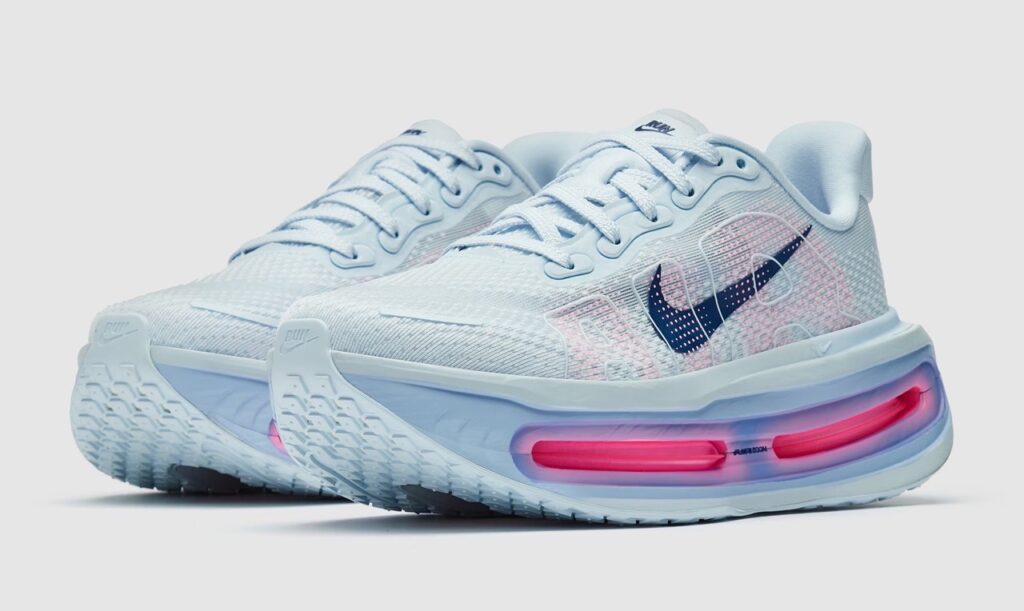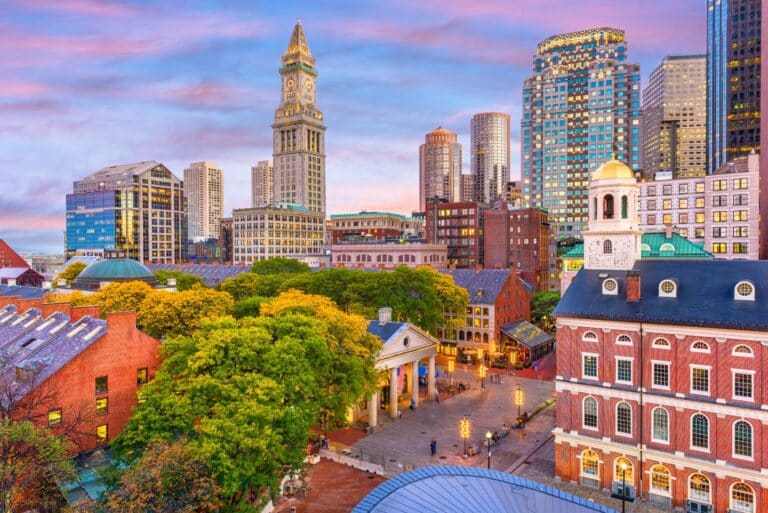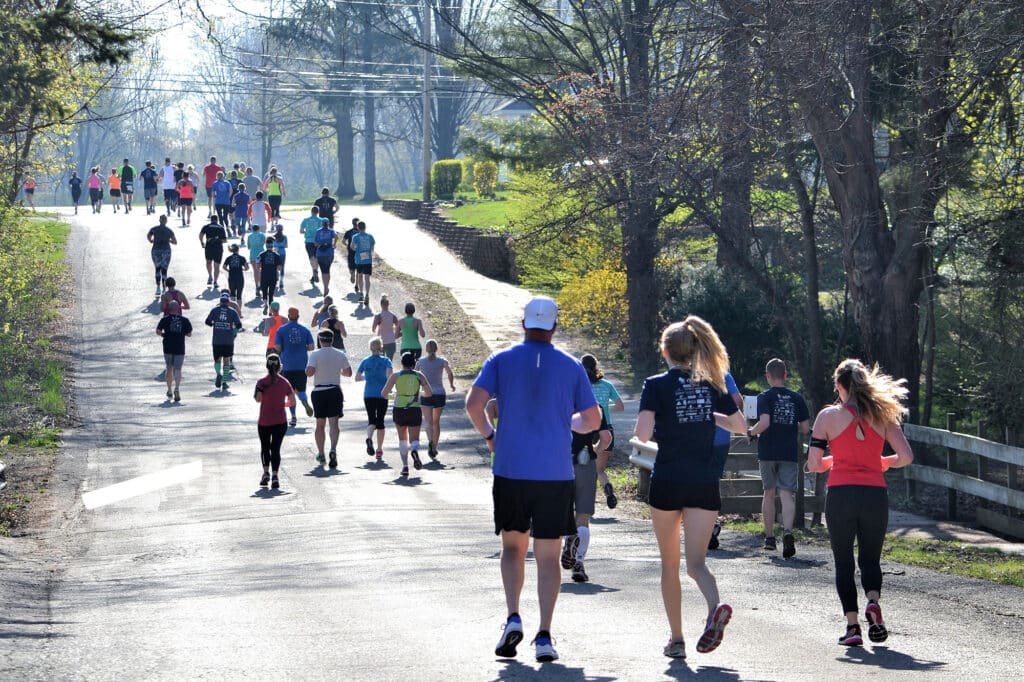


The Boston Marathon is the world’s oldest annual marathon, hosted by several cities in Massachusetts, United States. It is one of the most prestigious and oldest marathons in the world, with its first race being held in 1897. Every year, thousands of runners from all around the world strive to qualify and participate in this historic event. It is part of the Abbott World Marathon Majors, a series that includes six (soon to be seven) of the largest and most prestigious marathons globally.
To participate in the Boston Marathon, runners must meet specific qualifying times based on their age and gender. The Boston Athletic Association (BAA), the organisers of the event, has set these strict qualifying standards to ensure that only experienced and capable runners are allowed to participate. These requirements have been put in place for safety reasons as well as to maintain the integrity and competitive nature of the race.
The Boston Marathon is an annual marathon race hosted by several cities and towns in greater Boston in eastern Massachusetts, United States. Traditionally held on Patriots’ Day, the third Monday of April, the event was inspired by the success of the first marathon competition in the 1896 Summer Olympics. The Boston Marathon is the world’s oldest annual marathon and ranks as one of the world’s best-known road racing events. It is one of six World Marathon Majors, a series that includes the most prestigious marathons globally.
The course runs from Hopkinton in southern Middlesex County to Copley Square in Boston, covering 26.2 miles of challenging terrain. The Boston Athletic Association (B.A.A.) has organised this event annually since 1897, including a “virtual alternative” after the 2020 road race was cancelled due to the COVID-19 pandemic. The B.A.A. ensures that the event maintains its high standards and continues to be a symbol of excellence in the running community.
The Boston Marathon has a rich history, dating back to 1897. It was first run in April 1897, inspired by the revival of the marathon for the 1896 Summer Olympics in Athens, Greece. Until 2020, it was the oldest continuously running marathon, and the second longest continuously running footrace in North America, having debuted five months after the Buffalo Turkey Trot. The event has grown significantly over the years, with an average of about 30,000 registered participants each year. In 2024, 30,251 people entered the race, showcasing its immense popularity.
One of the most notable milestones in the marathon’s history was the Centennial Boston Marathon in 1996, which established a record as the world’s largest marathon with 38,708 entrants, 36,748 starters, and 35,868 finishers. This event highlighted the marathon’s global appeal and its status as a premier event in the running world. The Boston Marathon continues to be a symbol of endurance, dedication, and the spirit of competition.
The Boston Marathon has strict qualifying standards that runners must meet to be eligible for registration. These standards are based on age and gender and have been updated over the years to ensure fair competition.
The qualifying times are determined by the BAA and must be met in a qualifying marathon race. They accept qualifying times from USATF, World Athletics/AIMS, or foreign equivalent certified courses.
To qualify for the Boston Marathon, runners must reach a qualifying time within a specific time frame. The 2025 Boston Marathon places have already been allocated, but the 2026 qualifying times for each age group can be found on the Boston Marathon website.
The qualifying times are:
| Age Group | MEN | WOMEN | NON-BINARY |
| 18-34 | 2hrs 55min 00sec | 3hrs 25min 00sec | 3hrs 25min 00sec |
| 35-39 | 3hrs 00min 00sec | 3hrs 30min 00sec | 3hrs 30min 00sec |
| 40-44 | 3hrs 05min 00sec | 3hrs 35min 00sec | 3hrs 35min 00sec |
| 45-49 | 3hrs 15min 00sec | 3hrs 45min 00sec | 3hrs 45min 00sec |
| 50-54 | 3hrs 20min 00sec | 3hrs 50min 00sec | 3hrs 50min 00sec |
| 55-59 | 3hrs 30min 00sec | 4hrs 00min 00sec | 4hrs 00min 00sec |
| 60-64 | 3hrs 50min 00sec | 4hrs 20min 00sec | 4hrs 20min 00sec |
| 65-69 | 4hrs 05min 00sec | 4hrs 35min 00sec | 4hrs 35min 00sec |
| 70-74 | 4hrs 20min 00sec | 4hrs 50min 00sec | 4hrs 50min 00sec |
| 75-79 | 4hrs 35min 00sec | 5hrs 05min 00sec | 5hrs 05min 00sec |
| 80 and over | 4hrs 50min 00sec | 5hrs 20min 00sec | 5hrs 20min 00sec |
The qualifying window for the 2026 Boston Marathon opened on September 1, 2024, and will run through the end of registration next autumn 2025 (dates to be announced). The registration period is typically brief since spots fill up quickly. For instance, the 2025 registration window lasted only five days, from September 9 to September 13, 2024.
The qualifying period will stay open until the Boston Marathon registration closes, once the maximum field size is filled. Only times from certified full marathons will be accepted for qualification. Times from indoor or virtual marathons are not eligible. Historically, runners who beat their qualifying standard by a larger amount of time are more likely to be accepted into the Boston Marathon. To be accepted into the 2025 race, athletes, on average, must have run at least 6:51 faster than their respective qualifying standard.
Qualifying times for the Boston Marathon are determined by the Boston Athletic Association (B.A.A.) and are based on age and gender. These qualifying times are set to ensure that only the fastest and most capable runners can participate in the event. The B.A.A. adjusts these times annually to reflect changes in the running community and to maintain the competitiveness of the marathon.
The qualifying times are designed to challenge runners and ensure that the field is composed of experienced athletes. By setting these standards, the B.A.A. maintains the integrity and prestige of the Boston Marathon, making it a goal for runners worldwide to achieve. The qualifying times are a testament to the marathon’s high standards and its commitment to excellence.
Achieving a qualifying time for the Boston Marathon requires a significant amount of training and hard work. Runners must be dedicated and consistent in their training, pushing themselves to reach their goals. The journey to qualify for the Boston Marathon is a test of endurance, speed, and mental fortitude.
There are several strategies and tips that runners can use to achieve a qualifying time for the Boston Marathon:
By following these strategies and tips, runners can increase their chances of achieving a qualifying time for the Boston Marathon. The journey to qualify is challenging, but with dedication and the right approach, it is an attainable goal.
Apart from meeting the strict qualifying times, runners must also meet certain requirements set by the BAA to participate in the Boston Marathon. These include:
The entry process for the Boston Marathon is quite competitive due to the limited number of spots available. Here’s a quick overview of how it works:
Running the Boston Marathon, a major marathon, is a dream for many runners, but it requires proper training and preparation to succeed. Here are some tips to help you prepare for one of the most challenging marathons in the world:
The Boston Marathon is one of the most prestigious and challenging marathons in the world. The entry process is highly competitive, with only a limited number of spots available. Proper training and preparation are crucial for success in this race.
If you’re serious about qualifying for the Boston Marathon, consider following a structured training plan to help you reach your goal. At Coach the Run, we provide an array of Marathon Training Plans crafted by London Marathon champion Mike Gratton. These plans cater to a range of abilities and target times, ensuring there’s something for every runner. There are plans designed for runners aspiring to qualify for the Boston Marathon or enhance their performance in it.
Our Coach the Run Marathon Plans include weekly mileage, suggested workouts, and rest days to help you prepare for race day. It also includes tips on nutrition, stretching, and injury prevention.
Following a training plan can not only help you achieve your goal of qualifying for the Boston Marathon but can also improve your overall running performance.
For those seeking more, consider signing up for our Coach the Run Personalised Training Plan to help you reach the elusive Boston Marathon qualifying time.
Our Personalised Training Plan offers exclusive access to London Marathon winner Mike Gratton. He will design a custom marathon training plan tailored just for you.
How does the Coach the Run customised marathon training plan work?
Step 1 – Simply sign up today for just £75!
Step 2 – Complete your pre-questionnaire to enable Mike to understand your running goals, motivation, fitness and lifestyle.
Step 3 – Chat with Mike online for an hour, over a video call, to delve into your unique race day requirements. During this call, we’ll discuss your marathon experience, any challenges you’re facing, upcoming races, known injuries, and current life circumstances.
Step 4 – Receive your custom marathon training plan designed personally by Mike.
Step 5 – Use your bonus follow-up email at any time to ask Mike a question. At the end of the plan, you’ll be marathon-ready – so lace up and have the time of your life!

If you’re looking for even more personalised support and guidance throughout your Boston Marathon training, consider our Run Your Best Race one-to-one Coaching program. This program includes all the benefits of our Personalised Training Plan, plus additional one-on-one coaching sessions with Mike Gratton. These sessions can help fine-tune your training plan, address any concerns or challenges, and provide ongoing support and motivation.
What does ‘Run Your Best Race’ include?
One-hour kick-off video call with Mike Gratton – during your discovery video call, Mike will discuss your goals, background, and fitness levels.
Personalised PDF training plan – with over 40 years of experience in amateur and professional running, coach Mike will create a personalised training plan tailored to your needs. Every four weeks, your plan is adjusted based on your feedback and progress, preparing you for your big day.
Private questions via our portal – ask Mike unlimited questions about your half marathon or marathon training – from strategies for success and advice on injuries to kit and nutrition… and some much-needed motivation.
Catch-up video calls during progress -you can also request additional video calls with Mike (up to three in total) to help you stay laser-focused on the finish line.
Access our online runner’s community – you’ll gain access to our exclusive running community group on Strava; connect with others who are joining you on the road to success with Mike.
Exclusive discounts – within our portal, you’ll unlock exclusive member discounts for renowned brands like sportsshoes.com and pilatesforrunners.co.uk.
The Boston Marathon covers 26.2 miles of winding roads, tracing Route 135, Route 16, Route 30, and city streets to the heart of Boston. It features a net elevation drop of 459 feet from start to finish. Traditionally, the marathon takes place on Patriots’ Day, the third Monday in April.
The race starts at Main Street in Hopkinton and finishes on Boylston Street in front of the Boston Public Library. The course includes challenging hills, particularly in the infamous Newton Hills section between miles 16 and 21. Despite this challenge, many runners consider it an honour to conquer these hills and complete the iconic course. Notably, Bobbi Gibb was the first woman to run the entire Boston Marathon in 1966, marking a pivotal moment in the race’s history.
Logistics for race day can be overwhelming, so it’s essential to plan ahead. Make sure you know where your bag drop is located and allow enough time for travel and warm-up before the start of the race. The weather can also play a significant role in the Boston Marathon, so make sure to check the forecast and prepare accordingly.
The Boston Marathon is organised by the Boston Athletic Association (B.A.A.) and has a strict qualifying standard for participants, requiring runners to achieve specific times in a qualifying race on certified courses. Runners must meet specific qualifying times on certified courses to register for the race. These qualifying standards vary based on age and gender, with more stringent times for younger runners.
The B.A.A. also has a strict no-transfer policy, meaning runners cannot give their bib number to someone else or run under someone else’s name. This ensures the integrity of the race and maintains an equal opportunity for all runners who qualify.
The Boston Marathon draws around 500,000 spectators, making it the most-watched sporting event in New England. A highlight of the race is the Scream Tunnel at Wellesley College, a quarter-mile stretch where students enthusiastically cheer and offer kisses to the runners. Meanwhile, the Boston Red Sox host a home game at Fenway Park, starting at 11:05 a.m. As the game ends, fans pour into Kenmore Square to cheer on the runners as they approach the final mile.
The Boston Marathon truly is an iconic event steeped in rich history and traditions. It is the world’s oldest annual marathon, with the first race held in 1897. Participants run through towns, passing by landmarks such as the firehouse where Paul Revere is said to have hung lanterns to signal the start of the American Revolution.
Along the course, you can also find various forms of entertainment, from live bands and DJs to cheer squads and volunteers offering food and water. And at mile 20, runners are welcomed with a special tradition – a cold beer offered by the infamous “scream tunnel” at Wellesley College!
The Boston Marathon is not just a race; it’s an experience. With its challenging course, rich history, and enthusiastic spectators, it’s no wonder that thousands of runners dream of crossing the finish line on Boylston Street. But to reach this goal requires dedication, hard work, and proper training.
That’s where Coach the Run comes in. Whether you opt for one of our Marathon Training Plans or collaborate directly with our head coach, London Marathon winner Mike Gratton, through a Personalised Training Plan or the Run Your Best Race one-to-one coaching program, his expertise and guidance will be instrumental in helping you conquer the Boston Marathon and achieve your goals.
Ready for a speedy marathon challenge? Take a read of our 4 hour pace marathon blog.
So lace up your shoes and start training – the iconic race awaits!
Join our mailing list to stay up to date with the latest UK running events, training tips, and exclusive offers on running products. Rest assured, we value your privacy and would never dream of selling your address. Sign up now…
Share this article
As a runner, you may have experienced those days when your legs feel tired and...
Feeling sluggish and lacking motivation for running? You’re not alone. It can be tough to...
A runner’s guide to understanding and preventing this common running phenomenon Bonking, also known as...
Running is a fantastic way to improve your cardiovascular health, relieve stress, and build endurance....
As a runner, you’re no stranger to the physical benefits of lacing up your shoes...
We’re here to make sure you’re up-to-date with the latest running tips, events and product discounts – we’ve always got your back! Rest assured, we value your privacy and would never dream of selling your address.
BONUS: Sign up today and receive a FREE code for our Sub-4-Hour Marathon Plan